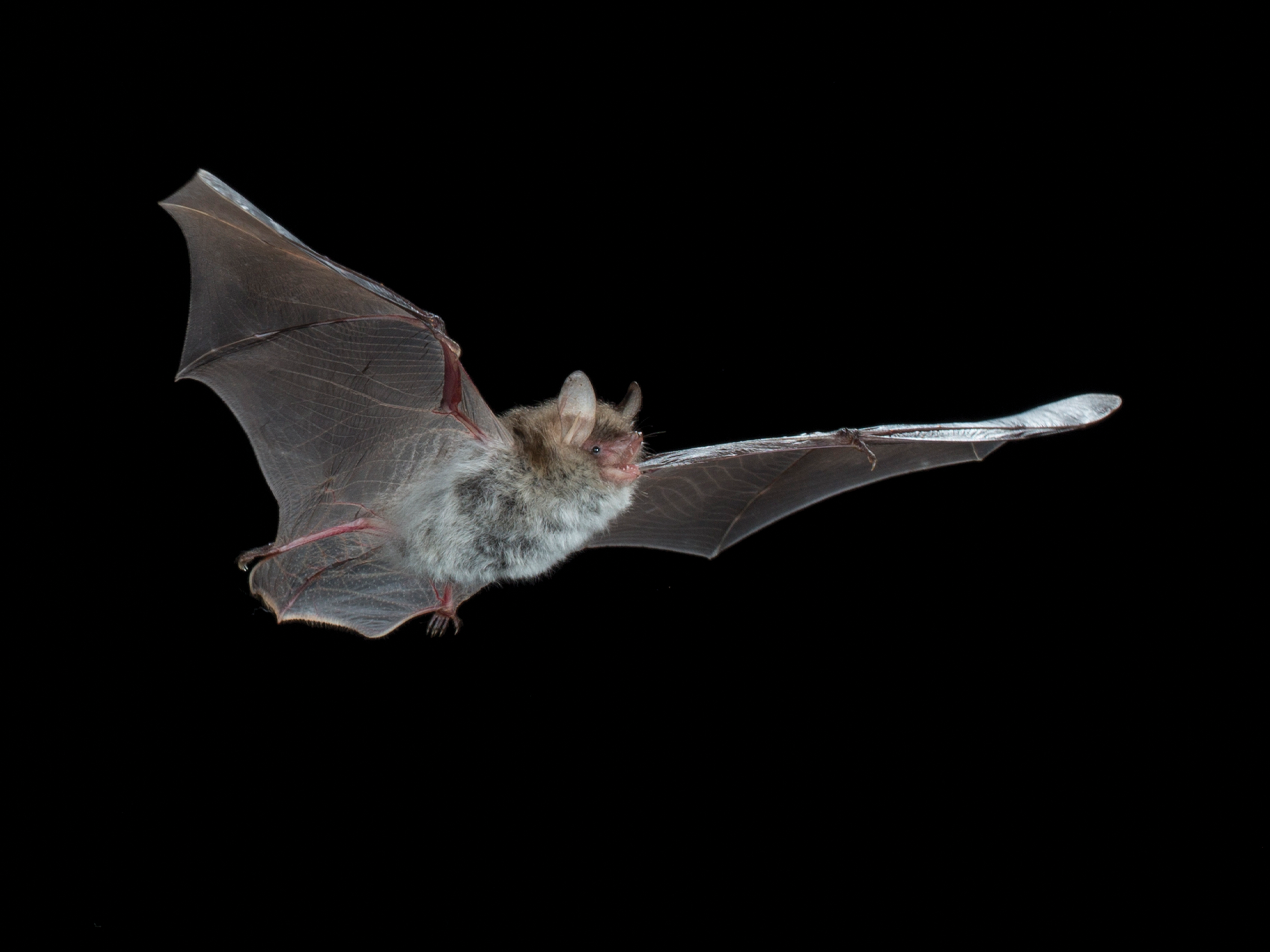
Charismatic creatures of the night
Discover how the Bats in Churches project has helped Norfolk’s historic places of worship harmonise with our only flying mammals
PHOTO: © Daniel Hargreaves; Bats Conservation Trust (above)
Norfolk’s spectacular medieval churches have sheltered bats for centuries, offering warm and dry voids, cosy crevices and plentiful supplies of food.
As dusk falls on balmy summer evenings, churchyards across the county come alive with silhouetted shapes swooping and diving in pursuit of insects to feast on. It’s a mesmerising sight to behold, but church communities have been less enthused when large numbers of these small creatures seek refuge inside the buildings to roost and raise their young. Bat droppings scattered across naves, pews and altars require constant cleaning, while urine stains threaten to damage priceless medieval treasures. In some cases, churches have been forced to cancel services or even consider closure due to the impact of their winged tenants.
In response to this growing issue, Norfolk naturally became a key focus for the Bats in Churches project - a collaboration between conservationists, heritage experts, and church organisations, funded by £5 million in grants, including £3.8 million from the National Heritage Lottery.
Driven by a desire to help bats and worshippers share these valuable buildings, specialists – including ecologists and architects - conducted surveys, collected data, and worked closely with congregations to develop sustainable solutions. Their efforts led to the construction of heated bat boxes and enclosed roof voids to provide alternative roosting spaces, the creation of bat-friendly areas in high rafters and the strategic blocking of access points to minimise disturbances. Training and advice were also provided, ensuring that communities could adapt to their nocturnal neighbours.
Among those deeply involved was ecology consultant Phil Parker, based in Pott Row, who has surveyed more than 300 Norfolk churches. For Phil, protecting bats is a passion, and he has witnessed both the challenges and triumphs of the project first-hand.
“Bats are determined little creatures whose size belies their tenacity,” he says. “They haven’t made it easy for us, but there have been success stories throughout the project. Our efforts have raised public awareness, and
many churches now joyfully embrace their winged visitors with bat walks, talks and exhibitions.”
Norfolk is home to 12 of the UK’s 17 bat species, including the brown long-eared bat and the tiny common pipistrelle, which is small enough to fit into a matchbox. Other familiar species include the soprano pipistrelle, known for its high-pitched calls, and the Natterer’s bat, named after the Austrian naturalist who discovered it.
Phil has encountered them all, even spending nights inside churches to observe their behaviour.
At a time when other habitats such as barns and trees are disappearing, rural churches have become a haven for these creatures
“Of the churches I surveyed in Norfolk, only four were completely bat free,” he recalls. “At a time when other habitats such as barns and trees are disappearing, rural churches have become a haven for these creatures.”
Some experiences proved more challenging than others; visits to St Margaret’s church in Saxlingham were particularly difficult due to the overwhelming smell of bat urine, which was too strong even for Phil to bear.
Despite the difficulties, Saxlingham became one of the project’s greatest success stories. With one of the largest Natterer’s bat colonies in Norfolk, the church had faced severe problems, but after three years of careful environmental adjustments, the bats were successfully relocated to a purpose-built roosting loft in the north transept. The congregation can once again use the church without endless cleaning, and historic floor brasses can remain uncovered.
St Margaret’s appeared on BBC Countryfile in 2023, exploring the impact of the Bats in Churches project and celebrating its successes. All Saints’ church in Thornham was also featured on BBC Breakfast, revealing how around 200 common and soprano pipistrelles had posed a threat to medieval woodwork and the beautiful painted rood screen. The congregation had resorted to covering pews in polythene to catch droppings, but thanks to the project, more sustainable solutions were found. Churches like Toftrees, which had previously closed due to bat disturbances, also benefited, reopening after careful conservation work introduced dedicated bat
roosting spaces.
One of Phil’s favourite churches is St Mary’s in Gayton Thorpe, which boasts one of Norfolk’s largest bat colonies, comprising over 500 soprano pipistrelles and 130 common pipistrelles. Thanks to the project, carefully crafted roosting areas in
the rafters, a bespoke wall-top box in the nave eaves, and additional bat boxes in surrounding trees have
helped foster harmony between bats and worshippers.
Although the national Bats in Churches project has officially concluded, its legacy endures. Several local churches remain part of the National Bat Monitoring Programme, including Gayton Thorpe, Saxlingham, Spixworth St Peter, and St Andrew’s in Little Massingham.
With bats still flitting through the rafters of Norfolk’s sacred landmarks, their story is far from over. Each fluttering wing is a quiet testament to the balance between preservation and coexistence, proving that even the smallest creatures can leave a lasting mark on the places we cherish.
Upcoming bat nights will be held at Swanton Morley on 1st August and Little Massingham on 9th August. Those interested in events, surveys and monitoring can contact Phil at admin@philipparkerassociates.co.uk
